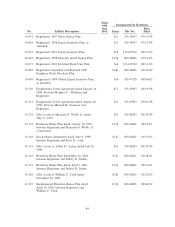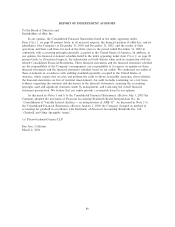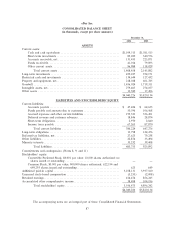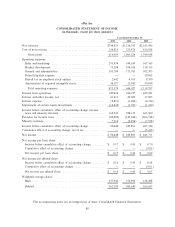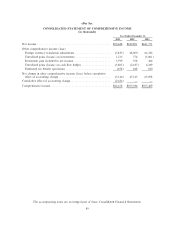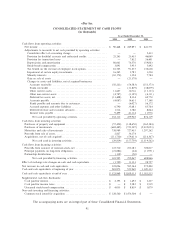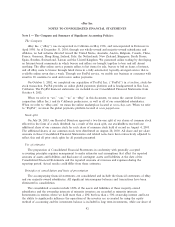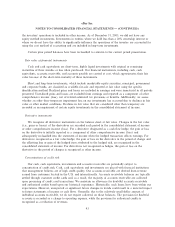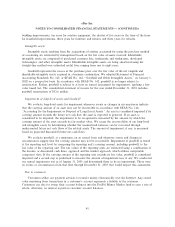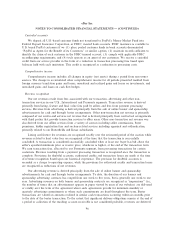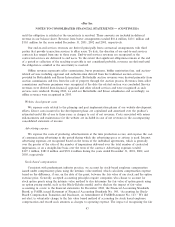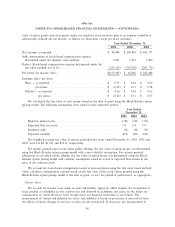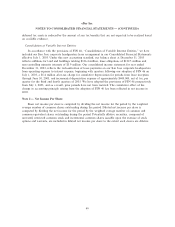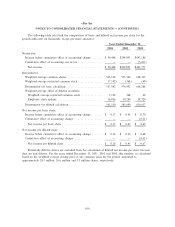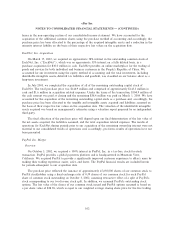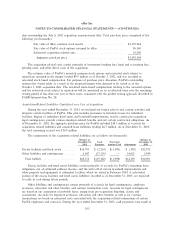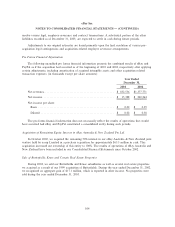eBay 2003 Annual Report Download - page 96
Download and view the complete annual report
Please find page 96 of the 2003 eBay annual report below. You can navigate through the pages in the report by either clicking on the pages listed below, or by using the keyword search tool below to find specific information within the annual report.eBay Inc.
NOTES TO CONSOLIDATED FINANCIAL STATEMENTS Ì (CONTINUED)
We also entered into two interest rate swaps with two separate Ñnancial institutions to reduce our
interest rate exposure on our San Jose corporate headquarters lease payments. If either of these Ñnancial
institutions should fail to deliver under these contracts, we may be subject to variable interest rate
payments.
During the years ended and as of December 31, 2002 and 2003, no customers accounted for more
than 10% of net revenues or net accounts receivable.
Allowances for transaction losses
Our Payments segment is exposed to transaction losses due to fraud, as well as non-performance of
customers and others. We establish allowances for estimated losses arising from processing customer
transactions, such as charge-backs for unauthorized credit card use and merchant related charge-backs due
to non-delivery of goods or services, Automated Clearing House, or ACH, returns, and debit card
overdrafts. These allowances represent an accumulation of the estimated amounts, using an actuarial
technique, necessary to provide for transaction losses incurred as of the reporting date, including those to
which we have not yet been notiÑed. The allowances are monitored monthly and are updated based on
actual claims data reported by our claims processors. Customers typically have up to 180 days to Ñle
transaction disputes. Consequently, the time between estimating the loss provisions and realization of the
actual amount is short. The allowances are based on known facts and circumstances, internal factors
including our experience with similar cases, historical trends involving loss payment patterns and the mix
of transaction and loss types. Additions to the allowance, in the form of provisions, are reÖected as a
general and administrative expense in our consolidated statement of income, while write-oÅs to the
allowance are made when a loss is determined to have occurred. Recoveries, when collected, are recorded
as an increase to the allowance for transaction losses. At December 31, 2003 and 2002, the allowance for
transaction losses totaled $12.0 million and $10.1 million, respectively, and was included in accrued
expenses and other current liabilities in our consolidated balance sheet.
Funds receivable and funds payable
Funds receivable and payable relate to our Payments segment and arise due to the time taken to clear
transactions through external payment networks. When customers fund their account using their bank
account or credit card, or withdraw money to their bank account or through a debit card transaction, there
is a clearing period before the cash is received or sent by PayPal, usually two or three days. Hence, these
funds are treated as a receivable or payable until the cash is settled.
Foreign currency
Substantially all of our foreign subsidiaries use the local currency of their respective countries as their
functional currency. Assets and liabilities are translated at exchange rates prevailing at the balance sheet
dates. Revenues, costs and expenses are translated into United States dollars at average exchange rates for
the period. Gains and losses resulting from translation are accumulated as a component of other
comprehensive income (loss).
Realized gains and losses from foreign currency transactions are recognized as other income and are
insigniÑcant for all periods presented.
Property and equipment
Property and equipment are stated at historical cost less accumulated depreciation. Depreciation and
amortization are computed using the straight-line method over the estimated useful lives of the assets,
generally, one to three years for computer equipment and software, up to thirty years for buildings and
94


